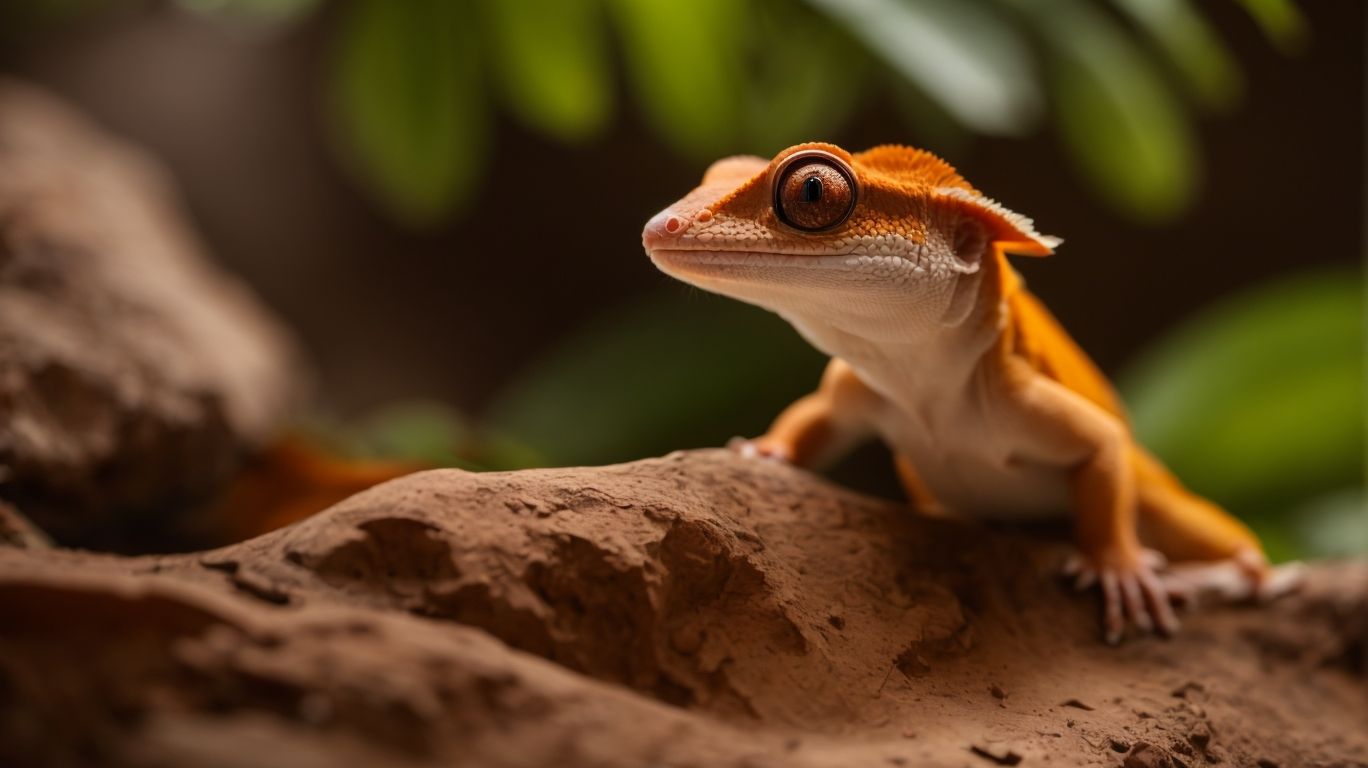
Cohabitation Guide: Can Crested Geckos Live Together Safely?
Are you considering housing your crested geckos together? It’s important to understand the ins and outs of cohabitation to ensure the safety and well-being of your pets.
In this comprehensive guide, we will explore the different types of cohabitation, the pros and cons for crested geckos, and the risks involved. We’ll also discuss how to determine if crested geckos can live together safely, including observing their behaviors, considering their gender and size, and providing sufficient space.
We’ll explore alternatives to cohabitation, such as keeping geckos separately or housing them with other species. By the end of this article, you’ll have a clear understanding of whether cohabitation is safe for crested geckos.
What Is Cohabitation?
Cohabitation refers to the practice of housing multiple crested geckos together in the same enclosure, creating a shared living environment for these reptiles.
This housing arrangement is a topic of significant debate among reptile enthusiasts and professional keepers. When considering cohabitation for crested geckos, it is vital to factor in their natural behavior and social structure. While some reptiles thrive in group settings, others are solitary by nature. For crested geckos, understanding their compatibility and individual personalities becomes crucial in determining whether cohabitation is appropriate. This also entails monitoring their interactions, ensuring that each gecko has sufficient space, resources, and a stress-free environment to coexist harmoniously.
What Are The Different Types Of Cohabitation?
In the context of crested geckos, cohabitation can manifest in various forms, including conspecific cohabitation, mixed-species cohabitation, and communal tank setups, each presenting unique dynamics and considerations for the reptiles involved.
Conspecific cohabitation involves housing crested geckos of the same species together, which may lead to social hierarchies and potential territorial disputes.
On the other hand, mixed-species cohabitation combines crested geckos with other reptile species, requiring careful consideration of compatibility and differing environmental needs.
Communal tank setups entail multiple crested geckos sharing a larger enclosure, fostering social interactions but necessitating adequate space and resources to prevent stress and aggression.
Understanding these cohabitation types is crucial for providing suitable housing and promoting harmonious interactions among crested geckos.
Can Crested Geckos Live Together?
The possibility of crested geckos living together largely hinges on factors such as their compatibility, social structure, and the provision of a suitable habitat that fosters safe cohabitation.
When determining if multiple crested geckos can cohabitate, it’s crucial to consider their individual personalities and potential territorial behaviors. Size and age also play a significant role in establishing a peaceful living environment.
Creating a spacious and enriching habitat, complete with hiding spots and climbing structures, can help minimize aggression and promote a balanced social dynamic among the geckos. Thorough research and consulting with reptile experts are essential for ensuring successful cohabitation of crested geckos.
What Are The Pros Of Cohabitation For Crested Geckos?
Cohabitation among crested geckos can offer certain benefits, including the potential for social interaction, environmental enrichment, and the establishment of natural social structures within the shared enclosure.
This type of social interaction can reflect natural behavior, allowing for the observation of intricate social dynamics among the geckos.
Cohabitation can create opportunities for environmental enrichment, as the presence of multiple geckos can stimulate exploration and interaction with various elements within their habitat, fostering mental and physical engagement.
The shared enclosure can mimic the natural social structures observed in the wild, providing a more natural environment and potential for the development of complex behavioral patterns.
What Are The Cons Of Cohabitation For Crested Geckos?
Cohabitation among crested geckos also carries certain risks and drawbacks, encompassing potential aggression, dominance conflicts, and the need for careful monitoring to ensure the well-being of all geckos involved.
Aggression and dominance conflicts may arise when multiple crested geckos are housed together, leading to stress, injuries, and potential health issues.
In a shared habitat, the competition for limited resources like food, water, and hiding spots can also heighten stress levels, impacting the overall welfare of the geckos.
The risk of spreading illnesses or parasites among cohabitating geckos is a concern, requiring vigilant observation and proactive veterinary care to mitigate potential health implications.
What Are The Risks Of Cohabitation For Crested Geckos?
The risks associated with crested gecko cohabitation entail potential health issues, stress-induced behaviors, and the need for vigilant monitoring to detect and address any arising concerns promptly.
In a cohabitation setting, crested geckos may experience increased competition for resources, such as food, water, and basking spots, leading to stress and potential aggression. This can exacerbate existing health conditions or even create new ones.
Overcrowding in the shared habitat can elevate the risk of parasitic infections, respiratory issues, and injuries. Therefore, it is crucial for caretakers to closely observe the geckos’ interactions, feeding patterns, and overall well-being to ensure early intervention if any health-related challenges arise.
How To Determine If Crested Geckos Can Live Together Safely?
Determining the safety of crested geckos living together involves assessing factors such as their size differences, behavioral interactions, and overall compatibility within a shared terrarium environment.
When introducing geckos to each other, it’s important to closely observe their behavior for any signs of aggression, dominance, or stress. This is especially crucial during feeding and basking times. Additionally, it’s important to consider each gecko’s individual preferences for hiding spots and basking areas to promote peaceful coexistence.
Regular health checks and providing enough hiding places and vertical space are also important for preventing conflicts and maintaining a harmonious living arrangement.
Observe The Geckos’ Behaviors
A crucial step in evaluating the potential for cohabitation involves closely monitoring the behaviors exhibited by the crested geckos, focusing on social dynamics, territorial displays, and any signs of stress or aggression.
This can be achieved through systematic observation of their interactions within the shared habitat, paying attention to their communication methods, such as vocalizations and body language.
Dominance displays, including head-bobbing and tail-waving, are notable indicators to assess their suitability for living together. Understanding stress-related behaviors, such as hiding, loss of appetite, or excessive jumping, is vital in determining their comfort level in a shared environment.
These observations provide valuable insights into the social dynamics and compatibility of crested geckos for cohabitation.
Consider The Geckos’ Gender
Gender considerations play a pivotal role in assessing the potential for safe cohabitation among crested geckos. The interaction dynamics between males, females, and conspecifics can significantly influence their living arrangements.
In order to create a peaceful living environment for crested geckos, it is important to understand how their interactions are influenced by gender. The interactions between males and females can have an impact on the overall stress levels within the group, which can affect their overall well-being. It is also important to consider conspecific compatibility, which refers to how individuals of the same species tolerate each other’s presence.
When deciding whether to house male and female geckos together, it is important to take into account potential breeding implications. Cohabitating males and females may engage in mating behaviors that could lead to stress or injury, so this should be carefully considered before making a decision.
Check The Geckos’ Sizes
Assessing the size differentials among crested geckos is essential for gauging their compatibility and safety within a shared habitat. Size disparities can influence dominance dynamics and resource accessibility.
Understanding the effects of size variations on territorial behaviors and resource competition in crested geckos is crucial for creating a harmonious living environment for them. These differences in size can greatly influence the establishment of territories and access to essential resources like food and hiding spots. By taking into account these size differences, reptile owners can prevent potential aggression and stress, promoting a more favorable cohabitation scenario for their crested geckos.
Proper housing accommodations should consider these size differentials to maintain a balanced and peaceful environment for these captivating reptiles.
Provide Sufficient Space
Creating an adequately spacious habitat for cohabitating crested geckos is crucial for minimizing territorial disputes, fostering natural behaviors, and maintaining a harmonious environment within the shared terrarium.
Proper terrarium size not only reduces aggression and stress among the geckos but also allows them to exhibit their natural climbing, hiding, and exploring behaviors. A larger living space enables the inclusion of diverse environmental enrichments such as plants, branches, and different hiding spots, which are essential for mental stimulation and overall well-being.
Inadequate space can lead to heightened competition for resources and potential health issues, emphasizing the significance of providing ample room for multiple crested geckos to thrive together.
What Are The Alternatives To Cohabitation?
In scenarios where cohabitation may not be suitable, alternative approaches for housing crested geckos include individual enclosures, mixed-species cohabitation, and communal tank setups, each offering distinct considerations and benefits for the reptiles.
Individual enclosures provide the advantage of personalized care and observation, allowing for tailored temperature and humidity control.
On the other hand, mixed-species arrangements may offer naturalistic interactions but require careful consideration of compatibility and space requirements.
Communal tank setups, while fostering social behaviors, demand vigilant monitoring to avoid dominance or aggression issues.
It’s crucial to match housing options with the geckos’ welfare and behavior, ensuring they thrive in their environment.
Keeping Crested Geckos Separately
Maintaining crested geckos in individual enclosures provides distinct advantages in terms of personalized care, environmental control, and the mitigation of social or compatibility concerns that may arise in shared habitats.
Individual housing allows for customized care tailored to the specific needs of each crested gecko. This includes temperature, humidity, and lighting preferences. It also enables environmental customization, such as the arrangement of plants, branches, and hiding spots. These elements can promote the gecko’s natural behaviors and overall well-being.
Individual housing also minimizes potential social or compatibility challenges that can occur when multiple geckos are kept together. This reduces stress and potential conflicts over territory and resources, ensuring a more peaceful and comfortable living environment for the gecko.
Housing Crested Geckos With Other Species
Exploring the compatibility of housing crested geckos with other reptile species within a communal tank setup can offer diverse ecological dynamics and unique opportunities for environmental enrichment. However, this is contingent on inter-species compatibility and behavioral interactions.
When considering housing multiple species together, it is important to thoroughly consider the temperament, size, and habitat needs of each potential cohabitant. This will help create a harmonious living environment for all involved, including the crested geckos.
Interspecies housing can provide mental stimulation and social interaction for crested geckos, promoting their overall well-being. It can also create a more naturalistic setting, mimicking their natural habitat and encouraging natural behaviors. However, close monitoring and careful planning are essential to prevent conflicts and ensure the health and safety of all reptiles involved.
Creating A Communal Tank
Establishing a communal tank for crested geckos and compatible reptile species presents the opportunity for shared environmental resources, potential social interactions, and a dynamic living space that mimics natural ecological communities, contingent on careful species selection and compatibility assessments.
This approach not only enriches the physical environment but also fosters natural behaviors and socialization among the reptiles.
Considerations for species selection should prioritize compatibility in terms of size, temperament, and environmental requirements. It’s crucial to create a balanced ecosystem within the communal tank, offering hiding spots, basking areas, and appropriate lighting and humidity levels to cater to the diverse needs of the inhabitants.
By creating a harmonious mixed-species habitat, keepers can witness fascinating inter-species dynamics and mutual benefit, promoting a holistic and enriching living environment for the reptiles.




No Comments